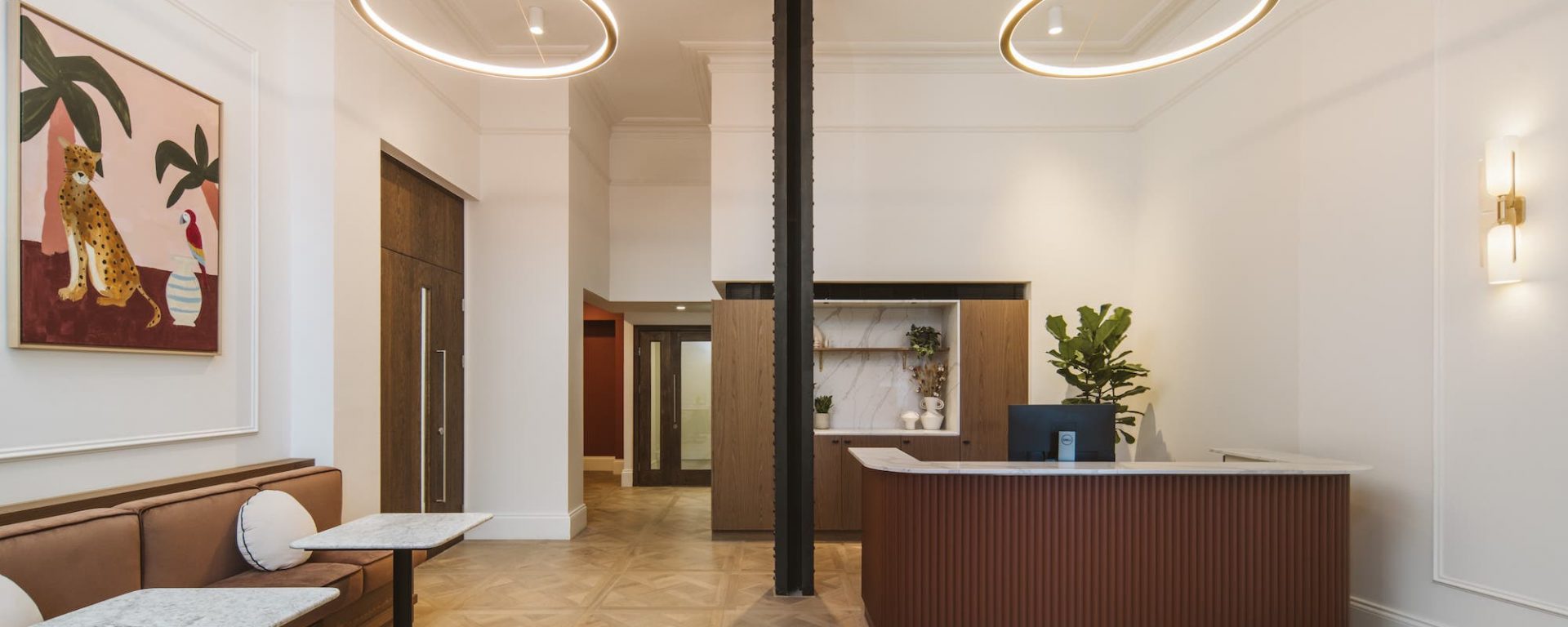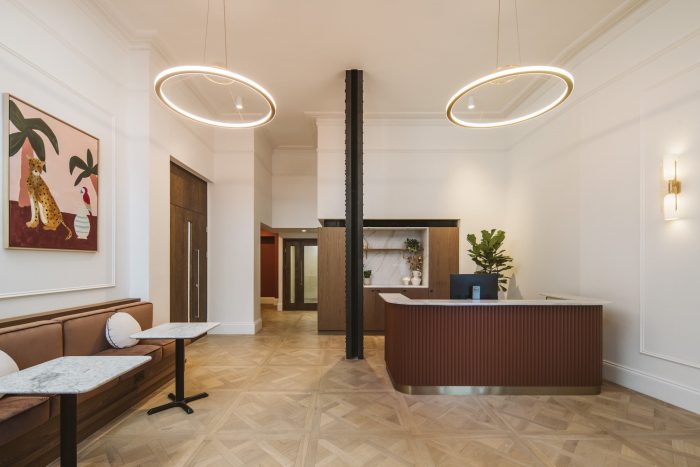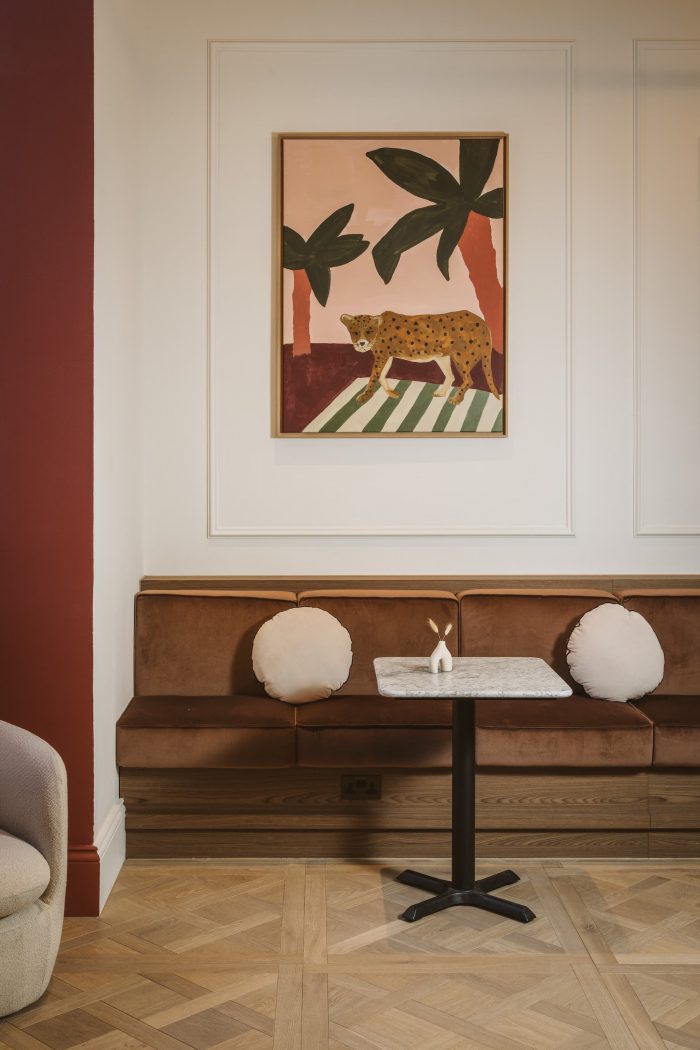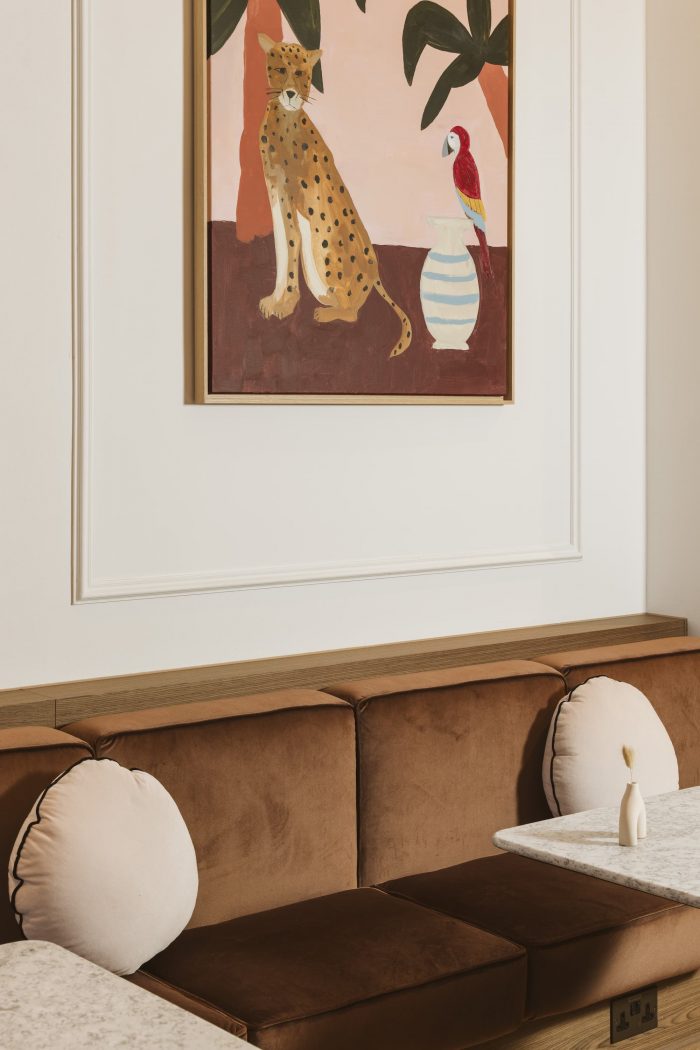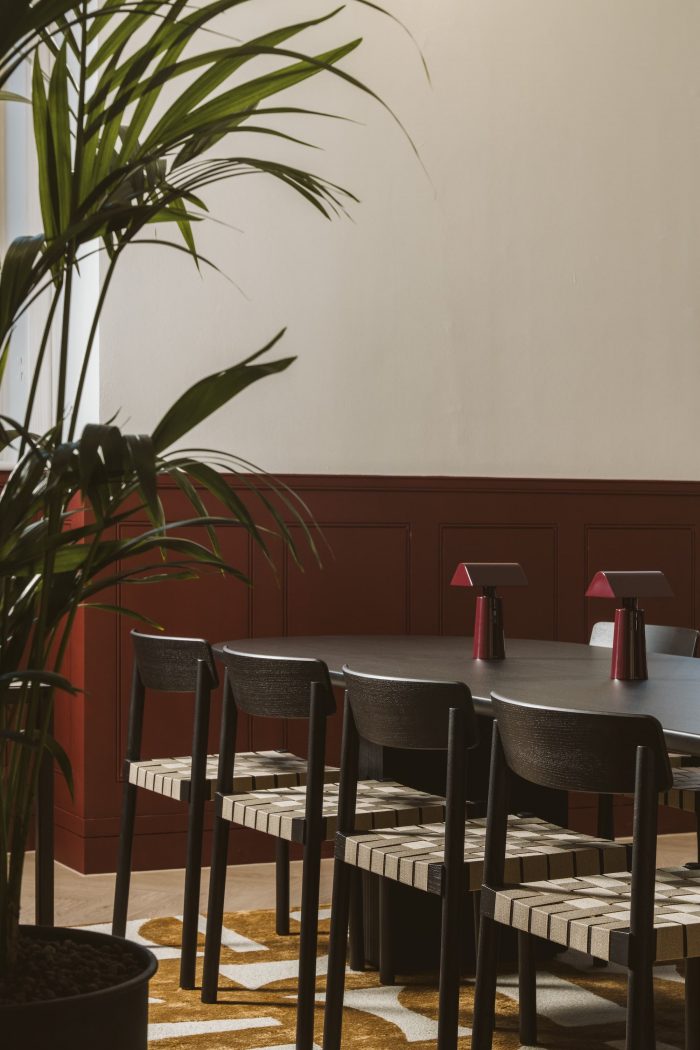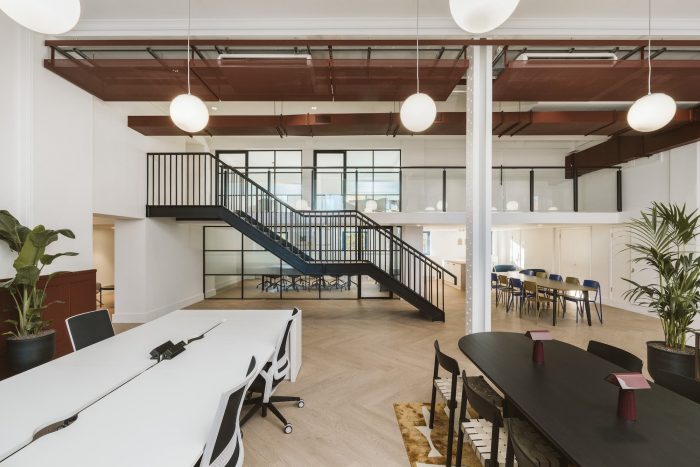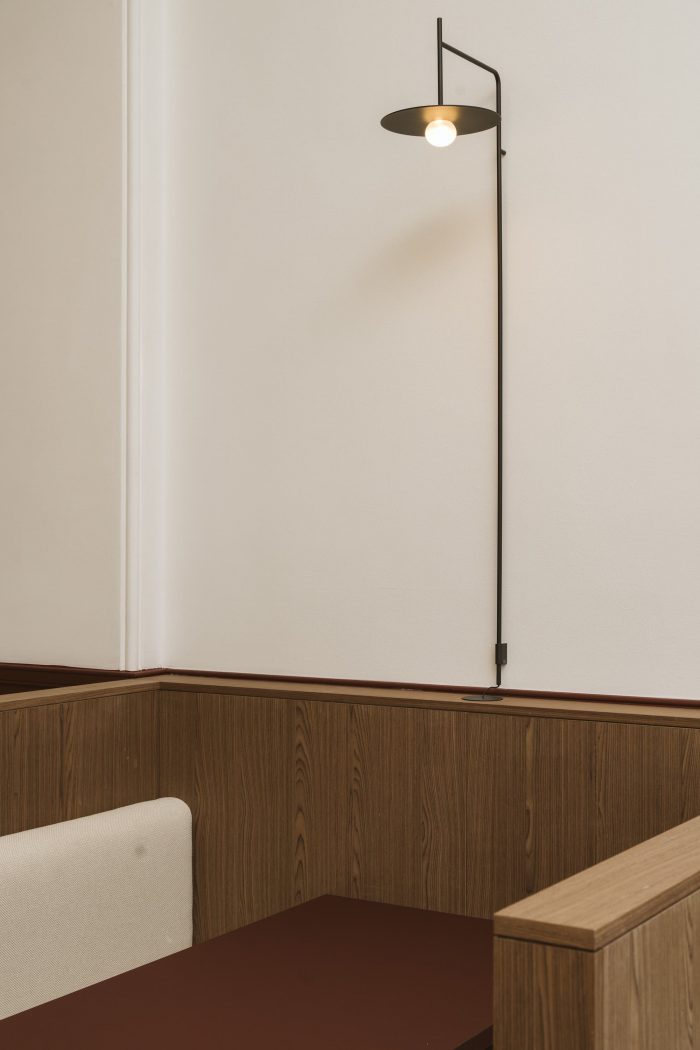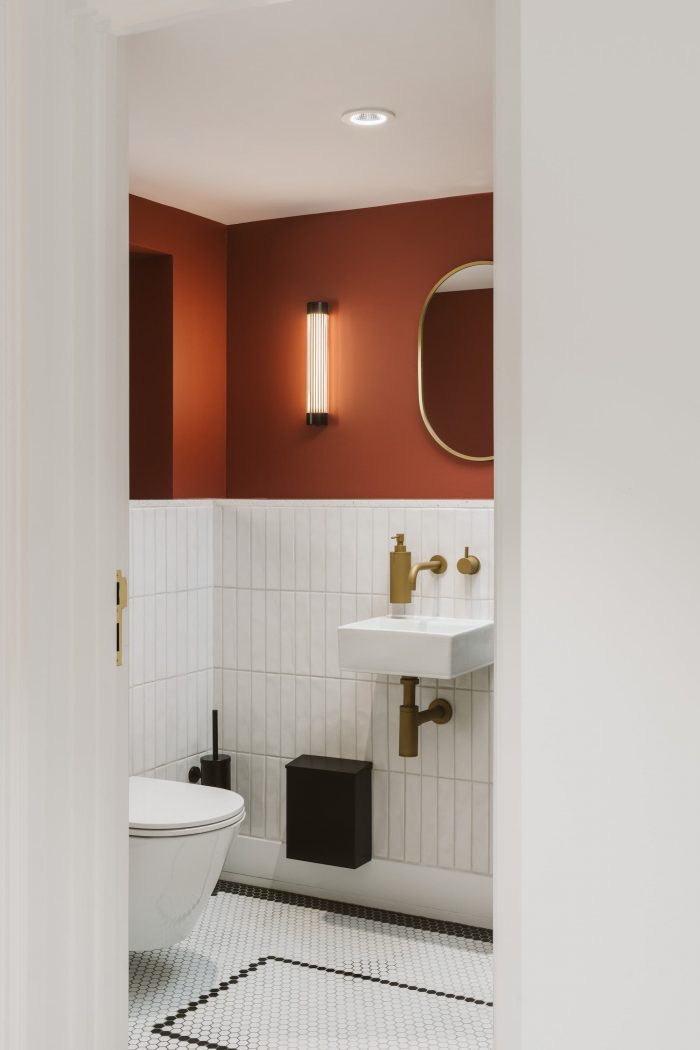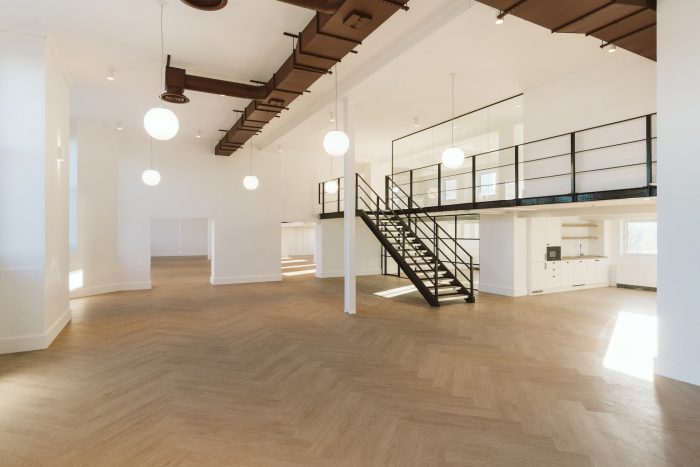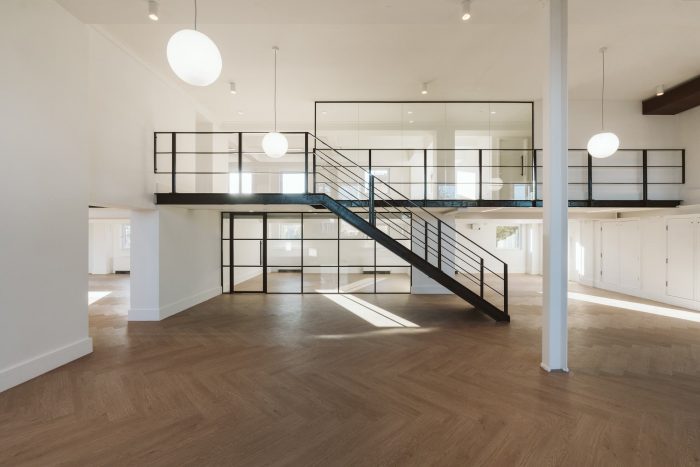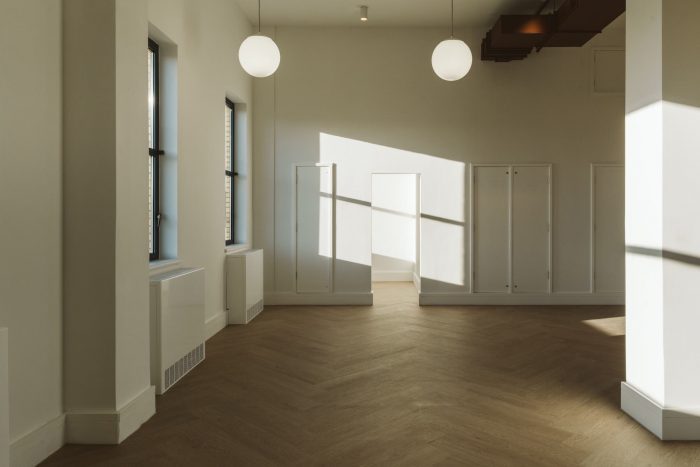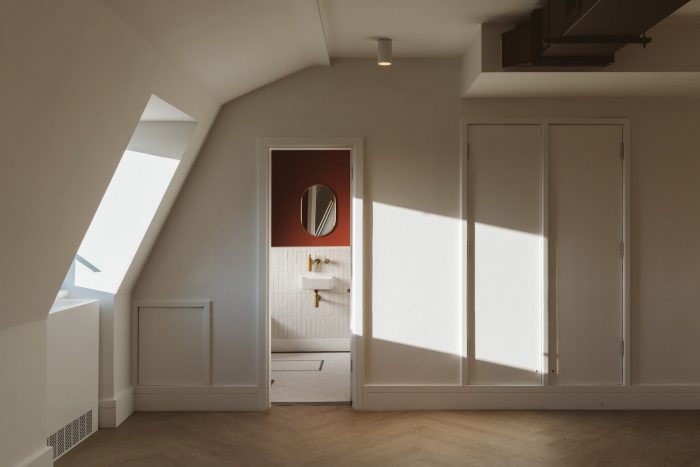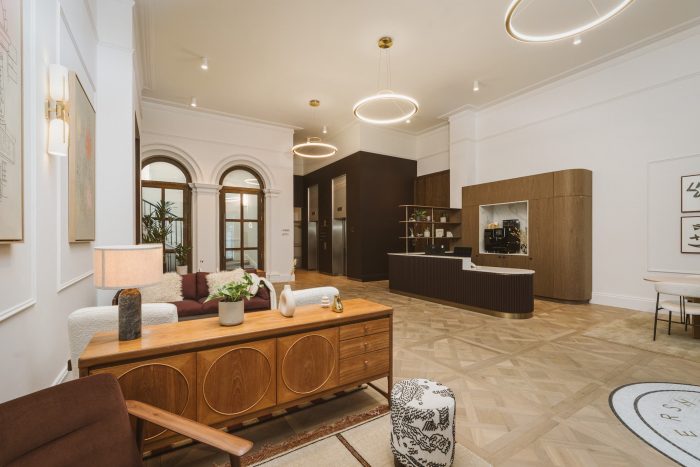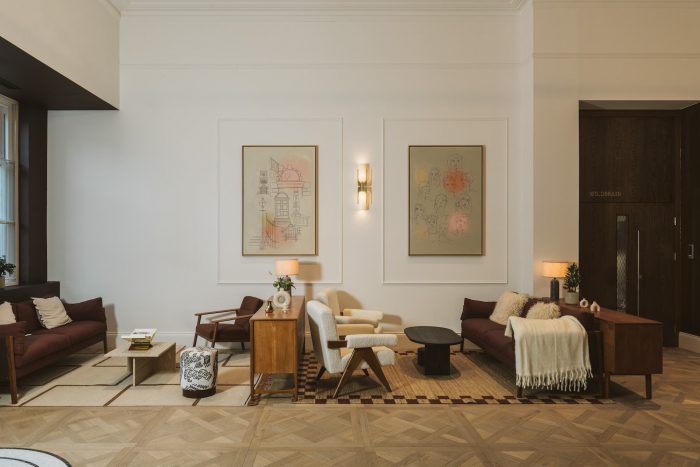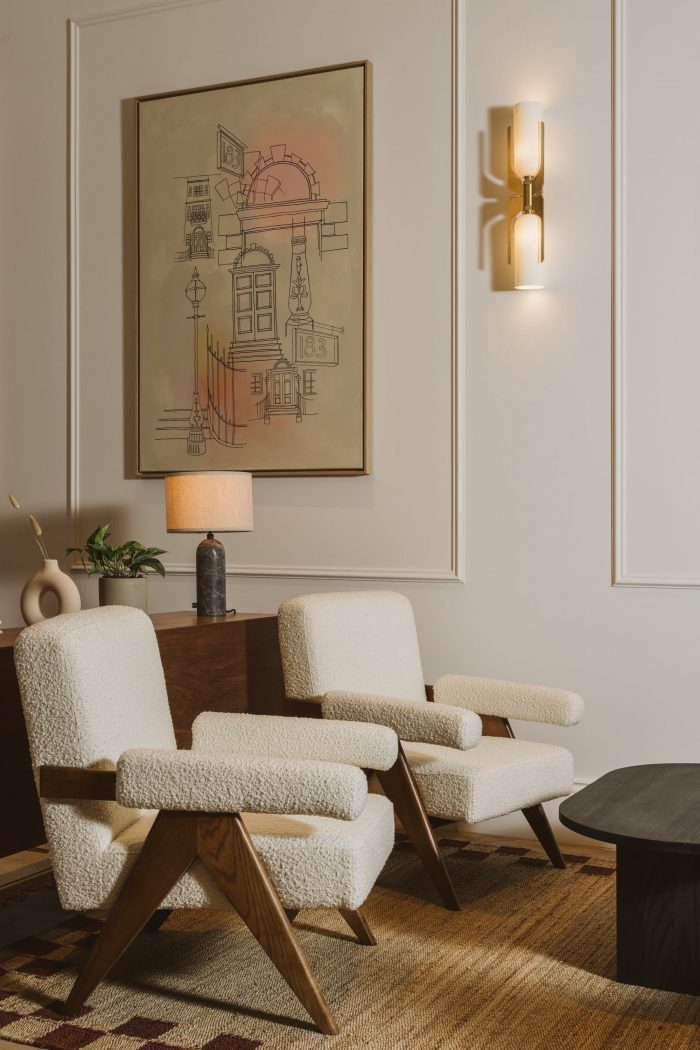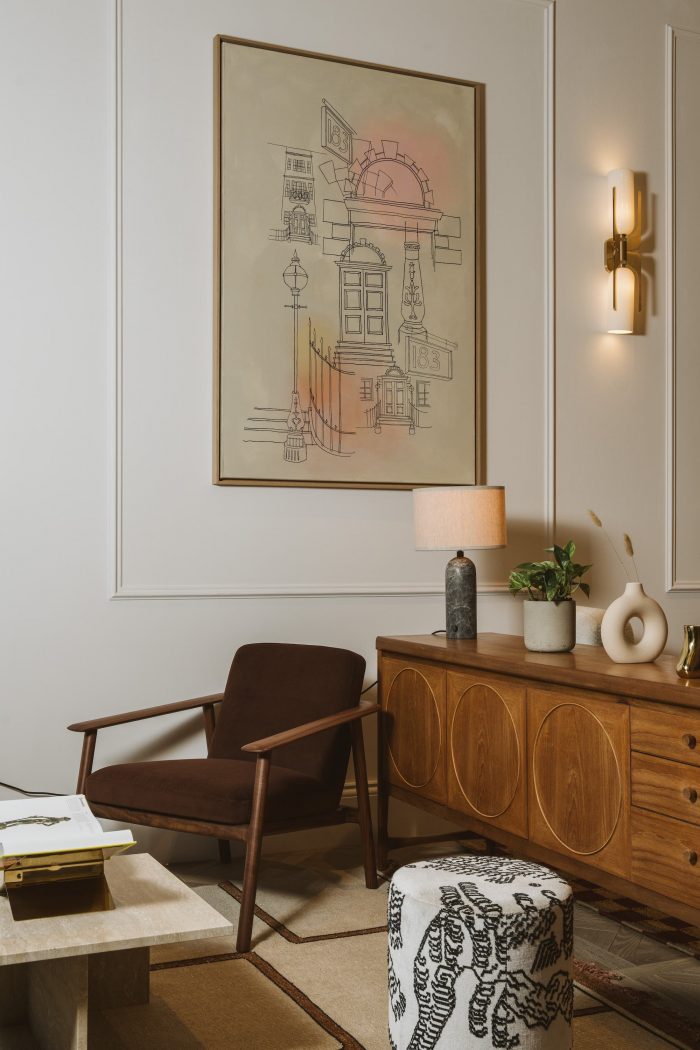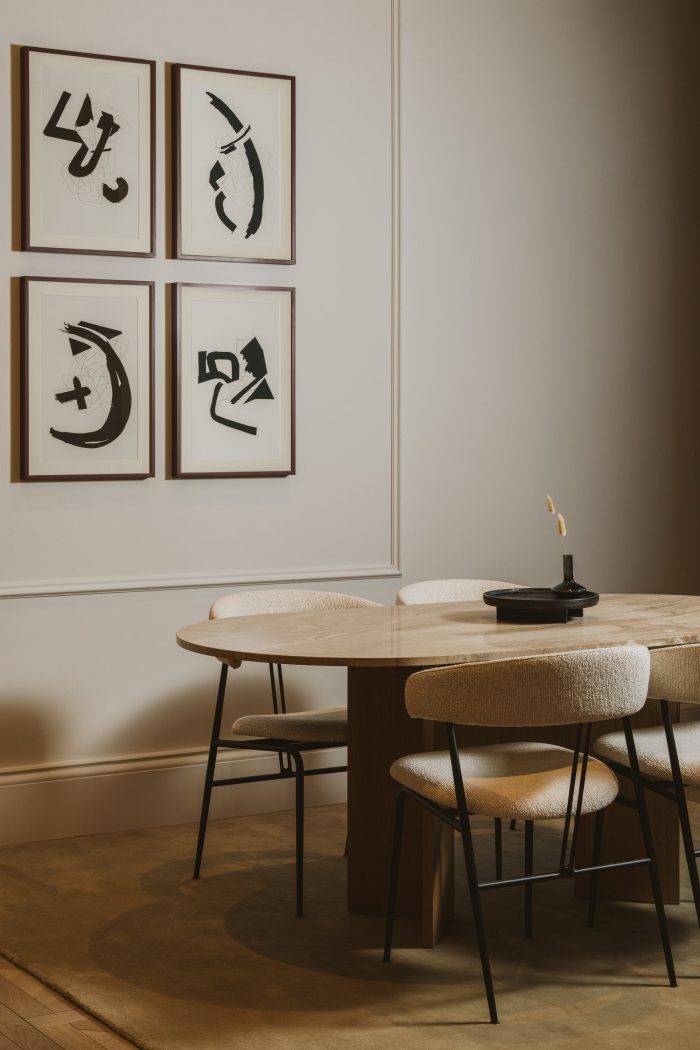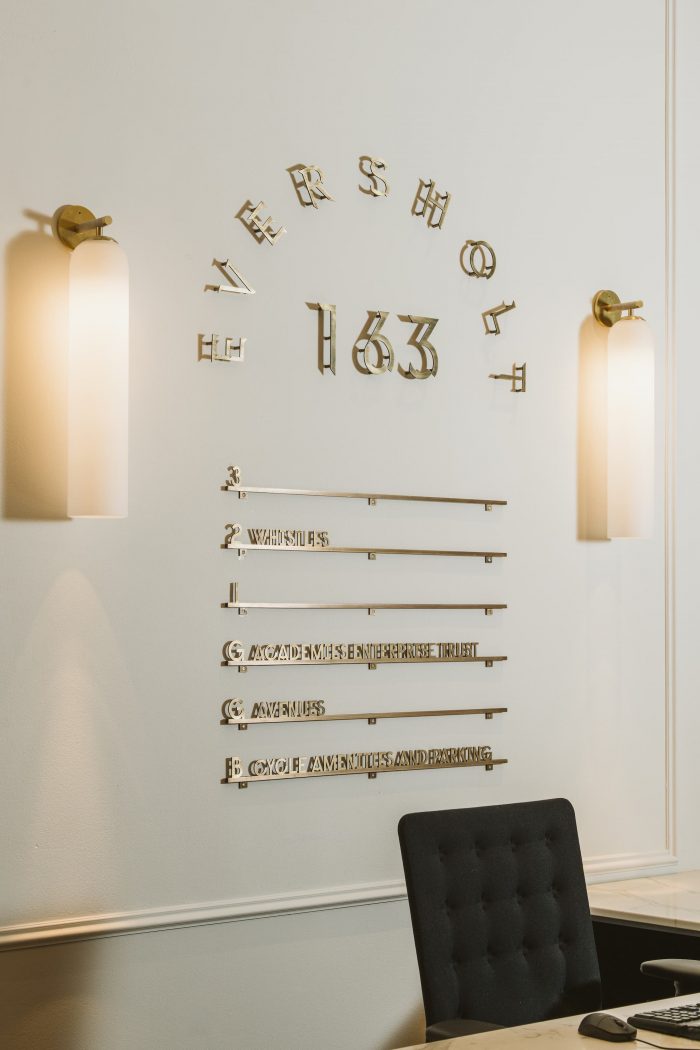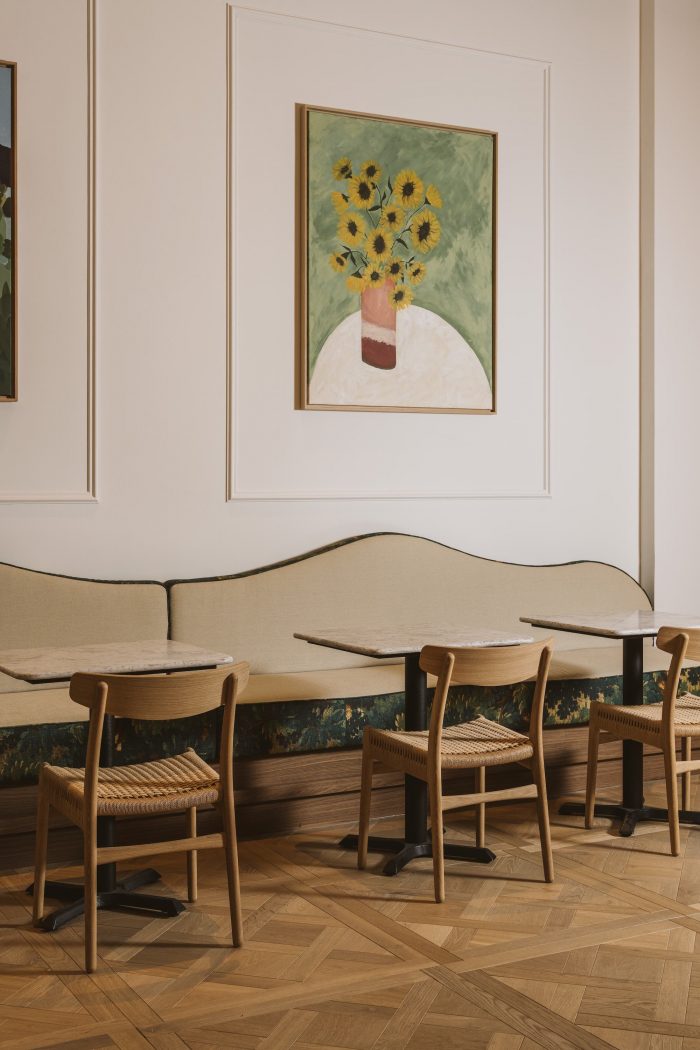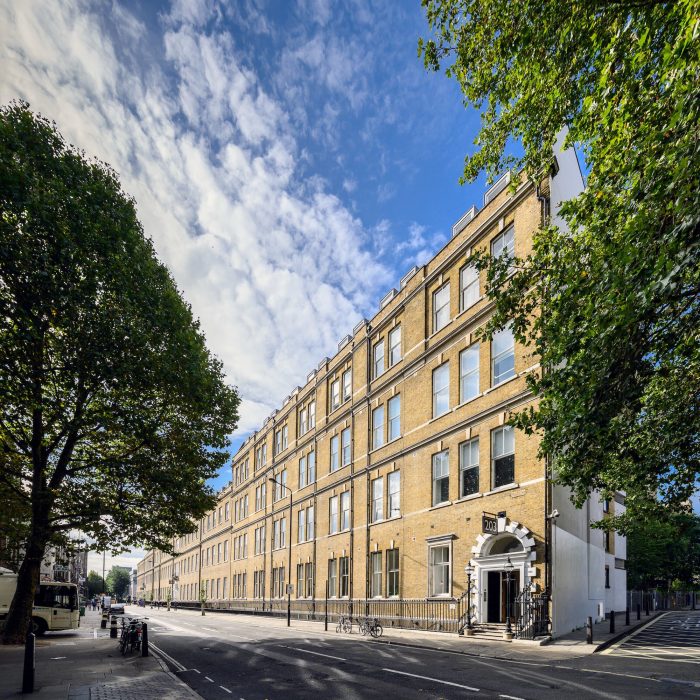Anomaly 的整体设计方法侧重于保留建筑的个性特征,如建筑元素和布局,同时创造现代体验。在整体设计方案中,原有的装饰、墙壁镶板和现有夹层等特色都得到了尊重。
接待区经过精心设计,营造出温馨和欢迎的氛围,每栋建筑都具有独特的特征,在保持凝聚力的同时营造出个性的感觉。
Anomaly’s holistic design approach focused on preserving the buildings’ individual identities, such as the architectural elements and layout, while creating a modern experience. Original features such as the cornicing, wall panelling and existing mezzanines were honoured in the overall design scheme.
The reception areas were carefully crafted to provide a warm and welcoming atmosphere, with distinctive features in each building creating a sense of individuality while still maintaining a sense of cohesion.
这些建筑作为一个整体的集体办公方案运作,共享停车和自行车等设施,但在其他方面,它们的入口和办公场所都是独立的,因此它们保持了各自的身份,并通过关键接触点的颜色变化巧妙地体现出来。
赛车绿、深茄子色和陶土色等传统色彩的使用将这些建筑联系在一起,而木质镶木地板和重新采用的装饰条则增添了温暖和特色。这些深思熟虑的设计选择在建筑的历史意义与现代办公空间所需的舒适性和功能性之间实现了平衡。
The buildings operate as a holistic collective office scheme, with shared facilities such as parking and cycling, but are otherwise independent in their entrances and office accommodation, so that they maintain individual identities, subtly denoted by changes in colour of key touchpoints.
The use of heritage colours, such as Racing Green, Deep Aubergine, and Terracotta, tied the buildings together, while timber parquet flooring and reintroduced cornicing added warmth and character. These thoughtful design choices create a balance between the historical significance of the building and the comfort and functionality required for modern office spaces.
工作区内的吊式球形灯被拆除,以营造更人性化的氛围,同时也是对该建筑作为分拣办公室的最初设计的微妙回溯。与现代办公室中普遍采用的条形灯相比,这种设计更显与众不同。
Pendant globe lights within the workspace were dropped to create a more human level and a subtle nod back to the original design of the building as a sorting office. While offering a point of difference from ubiquitous strip lights found in contemporary offices.
可持续性是设计过程中的一个重要考虑因素。Anomaly 重新利用了现有的元素和家具,采用了 Bolon 地板等可持续材料,并优先考虑了热能和能源性能的改善。
Sustainability was a key consideration in the design process. Anomaly repurposed existing elements and furniture, integrated sustainable materials like Bolon flooring, and prioritised thermal and energy performance improvements.
Anomaly 还通过深度清洁,重新利用了建筑物中的所有办公桌和工作椅。无法再利用的家具则捐给了一家办公家具慈善机构进行再分配,任何新家具都尽可能选择能够提供 EPD 的英国供应商,以实现可持续发展的愿望。
Anomaly also managed to reuse all desking and task chairs from the buildings, through a deep clean. Where it couldn’t be reused it was donated to an office furniture charity for redistribution, and any new furniture looked to UK suppliers who could provide EPDs where possible to align with the sustainability aspirations.
Architects: Anomaly
Year:2018
Area:15,000 sq ft
City: London
Country: United Kingdom

